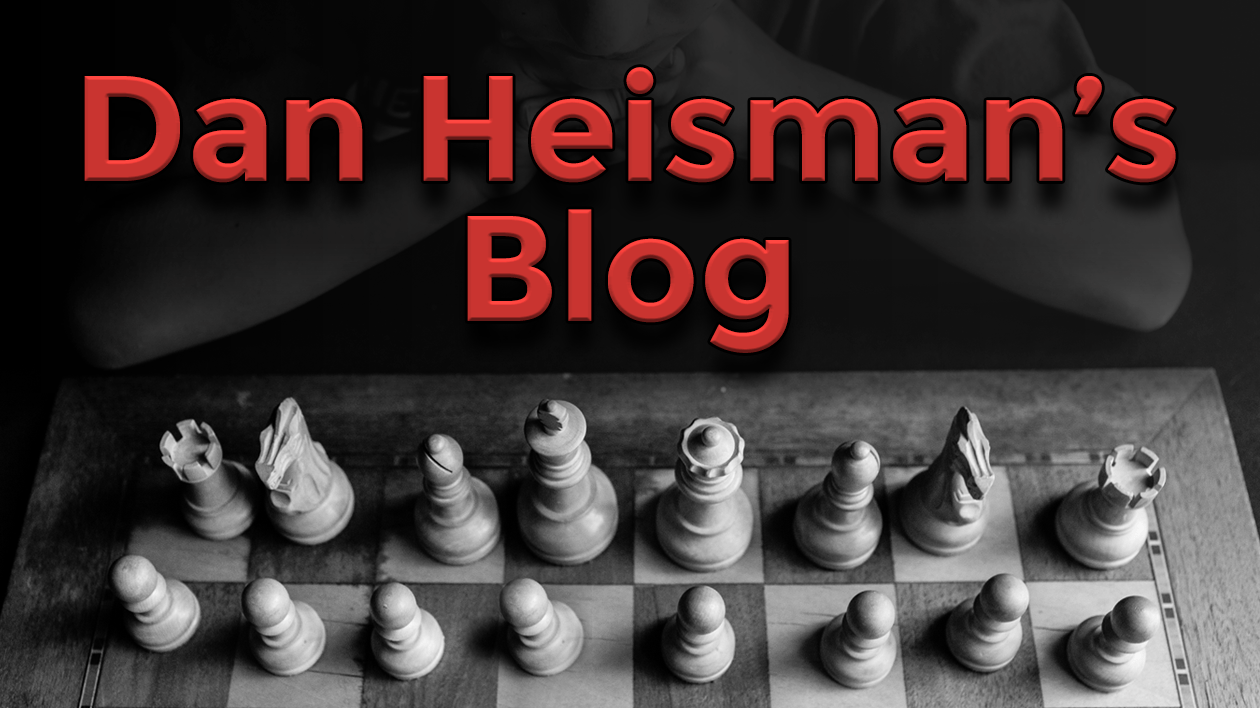
The Ways a Move Affects the Board
Show an absolute beginner the position after 1.Nf3 b5 2.e4...
...and ask him/her "What does the move 2.e4 do?" Likely he will miss that this creates a discovered attack of the bishop on f1 upon the black pawn on b5. That's because beginners have enough difficulty concentrating upon the piece that moved (e2-e4), much less it's "side effects".
However, in teaching about 1,000 students, I have noticed that most intermediate players often overlook one or more of the ways a move affects the board. So, just for the fun of it, I thought I would make a list of all the ways a move can affect (or, in some cases, fail to affect) the new position it creates on the board, along with some simple examples. When a piece moves, it affects:
- The new squares the piece that moved is now attacking (or guarding). For example after 1.e4 the e-pawn now attacks both d5 and f5. After 1.e4 e5 2.Nc3 now guards e4 (among others).
- The squares the moved piece is no longer attacking (or guarding). For example, moving the pawn with e2-e4 no longer attacks or guards d3 and f3.
- If the moved piece is a pawn, then moving it affects the squares it can no longer guard. So after 1.e4 not only does it no longer guard d3 and f3 (as in #2), but it no longer has the option to guard d4 or f4 either (this is how weak squares are eventually created. A weak square is a square that can no longer be guarded by a pawn, e.g. 1.e3 and 2.g3 weaken both f3 and h3).
- The effect on the square where the moved piece is residing. If this is a capture, that's a major effect. But even if it's not a capture, the piece that moved to that square may or may not be safe, e.g. 1.e4 f5 and the pawn that moved to f5 is not safe on that square.
- Discovered attacks (or moves) for your pieces [you could count this as two different affects if you prefer]. The discovered attack is the example we used at the start of the blog. 1.Nf3 b5 2.e4 discovers and attack on an opponent's piece, the white bishop on f1 on the black pawn on b5. A simple example of a discovered move is that 1.e4 discovers lines for the white queen, king, and bishop, not that the king is likely to play Ke2 in the near future
 .
. - Discovered attacks (or moves) for the opponent's pieces. For example:
- Blocking an attack or guard (or just the moves) of your own pieces, e.g. after our earlier example of 1.Nf3 b5 2.e4 if Black ignores the attack on b5 with 2...e6, then White can play 3.d3, blocking his own bishop's attack on b5. An example of just blocking the moves would be that 1.e4 e5 2.Nf3 at least temporarily blocks the white queen's possibilities to go to f3,g4, and h5.
- Blocking an attack (or moves or guard) of an opponent's piece. This is the common "interposition". So in the King's Gambit if 1.e4 e5 2.f4 Qh4+, then White can simply block with 3.g3. This not only stops the check on e1, but prevents the black queen's ability to go to f2 as well.
- A move with the king or rook might affect the right to castle. For example after 1.Nf3 d5 2.Rg1 White can no longer castle kingside later in the game, even if he returns the rook to h1.
- Finally, there is a "affect" of not addressing (and thus allowing) other issues on the board. For example:
As a further example of #10, a move can leave issue(s) unaddressed. For example, after 1.Nf3 b5 2.e4 e6 White can capture with 3.Bxb5, but suppose he intead plays 3.d4. Then Black can leave the issue of the hanging b5 pawn unaddressed with a move like 3...Be7, and White can further do the same with a move like 4.Be2, when either or both players can, purposely or not, leave unresolved issues like the safety of b5.
In most games between strong players, if one player misses an issue, the other is likely to resolve it in his favor immediately. However, watch any two beginners play and issues stay on the board move after move. Moreover, with absolute beginners, when they play over-the-board (where illegal moves are possible; online the server does not allow them), you might see a position where both kings are in check for several moves!
-----------------------
I may have missed a few esoteric issues (see some excellent readers' comments for some additional ideas), but hopefully you get the idea: when you contemplate your opponent's move and each of your own candidate moves and ask the most important questions "What are ALL the things that move does?" and "Is that move safe?", you can't only concentrate on the piece that moved and the squares it attacks. It only takes missing one consequence of a move to miss a key point. And since it only takes one bad move to lose a game, missing that key point can be enough to cost the game.
If you are not an experienced player, hopefully this blog will help you assess the affects of both sides' moves more carefully. And even if you are an experienced player and all of this was already known to you, it doesn't hurt to have a fresh reminder .
.
 .
.